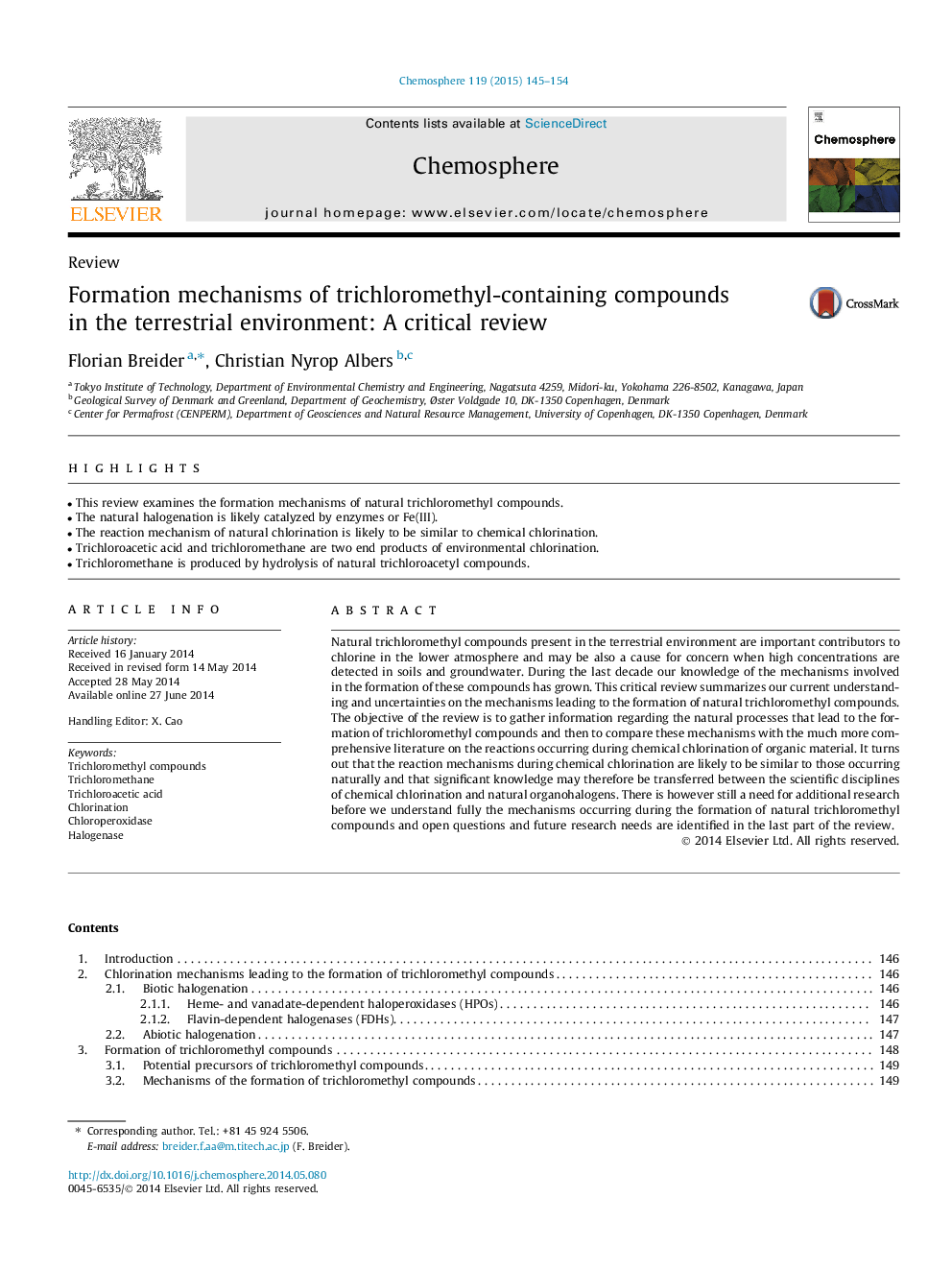| Article ID | Journal | Published Year | Pages | File Type |
|---|---|---|---|---|
| 4408614 | Chemosphere | 2015 | 10 Pages |
•This review examines the formation mechanisms of natural trichloromethyl compounds.•The natural halogenation is likely catalyzed by enzymes or Fe(III).•The reaction mechanism of natural chlorination is likely to be similar to chemical chlorination.•Trichloroacetic acid and trichloromethane are two end products of environmental chlorination.•Trichloromethane is produced by hydrolysis of natural trichloroacetyl compounds.
Natural trichloromethyl compounds present in the terrestrial environment are important contributors to chlorine in the lower atmosphere and may be also a cause for concern when high concentrations are detected in soils and groundwater. During the last decade our knowledge of the mechanisms involved in the formation of these compounds has grown. This critical review summarizes our current understanding and uncertainties on the mechanisms leading to the formation of natural trichloromethyl compounds. The objective of the review is to gather information regarding the natural processes that lead to the formation of trichloromethyl compounds and then to compare these mechanisms with the much more comprehensive literature on the reactions occurring during chemical chlorination of organic material. It turns out that the reaction mechanisms during chemical chlorination are likely to be similar to those occurring naturally and that significant knowledge may therefore be transferred between the scientific disciplines of chemical chlorination and natural organohalogens. There is however still a need for additional research before we understand fully the mechanisms occurring during the formation of natural trichloromethyl compounds and open questions and future research needs are identified in the last part of the review.
